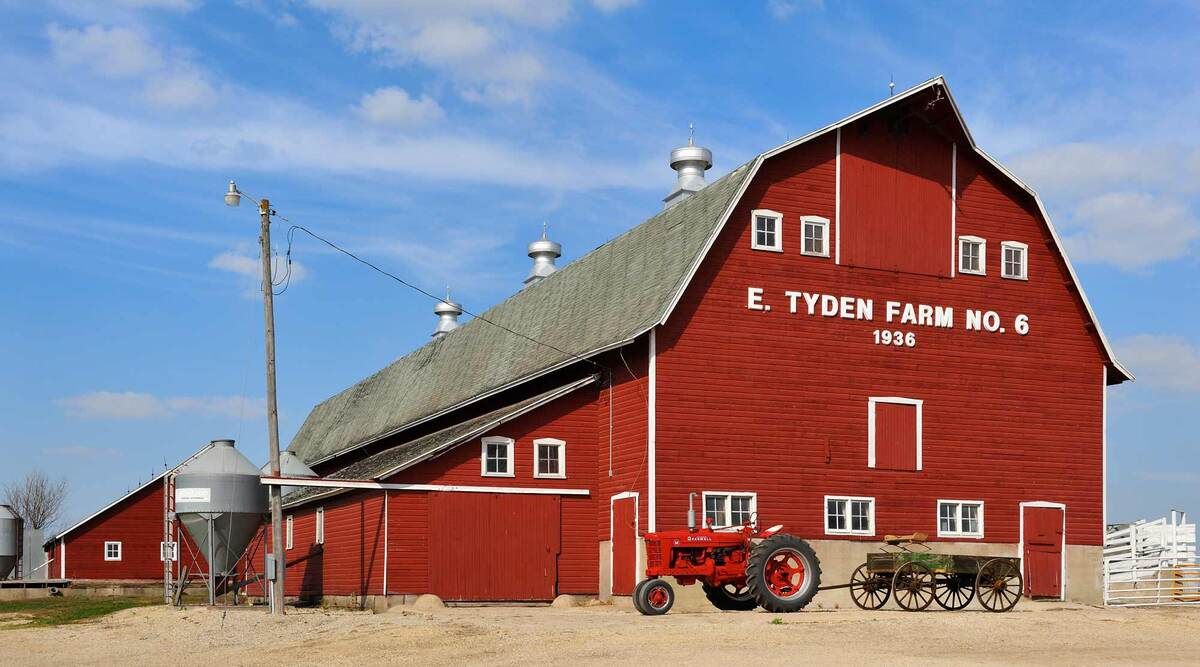Step Back In Time At Tyden Farm No. 6’s 1930s Farmstead

Ever wondered what life was like on a farm in the 1930s? Tyden Farm No. 6 offers a unique chance to step back in time and experience it firsthand. Located in the heart of Iowa, this historic farmstead has been meticulously preserved to give visitors a genuine feel of rural life during that era. From antique tractors to vintage household items, every corner of the farm tells a story. Perfect for history buffs, families, or anyone curious about the past, Tyden Farm No. 6 provides an educational and fun day out. Ready to travel back in time? Let's explore what makes this place so special.
Experience the Charm of the 1930s
Tyden Farm No. 6 offers a unique glimpse into the past. This farmstead, preserved to reflect the 1930s, provides visitors with an authentic experience of rural life during that era. Here are some must-see spots on your visit.
The Historic Barn
The barn stands as a testament to the craftsmanship of the 1930s. Step inside to see how farming operations were conducted nearly a century ago.
- Original Equipment: Discover vintage tractors and tools used by farmers.
- Hayloft: Climb up to the hayloft and imagine the hard work of storing hay for the winter.
- Animal Stalls: See where cows, horses, and other livestock were kept.
The Farmhouse
The farmhouse offers a cozy look into the daily lives of a farming family. Each room tells a story of simpler times.
- Kitchen: Check out the wood-burning stove and vintage kitchenware.
- Living Room: Relax in the living room, complete with period furniture and decor.
- Bedrooms: Peek into the bedrooms to see the modest yet charming sleeping arrangements.
The Schoolhouse
Education was a cornerstone of rural communities. The one-room schoolhouse at Tyden Farm No. 6 showcases the importance of learning.
- Desks and Chalkboards: Sit at the old wooden desks and imagine lessons taught on the chalkboard.
- Books and Supplies: Browse through the textbooks and school supplies from the 1930s.
- Teacher's Desk: Stand at the teacher's desk and feel the authority of guiding young minds.
The Blacksmith Shop
The blacksmith shop was essential for creating and repairing tools. This stop highlights the skill and strength required for this trade.
- Forge and Anvil: Watch demonstrations of metalworking techniques.
- Tools and Equipment: Examine the various tools used by blacksmiths.
- Finished Products: See the finished products, from horseshoes to farming implements.
The General Store
The general store was the hub of the community, offering everything from groceries to gossip.
- Merchandise Displays: Look at the shelves stocked with goods from the 1930s.
- Old Cash Register: Try out the antique cash register.
- Community Bulletin Board: Read the notices and advertisements that kept the community informed.
The Orchard and Gardens
Farming wasn't just about livestock and crops; gardens and orchards provided essential food for the family.
- Fruit Trees: Wander through the orchard and see the types of fruit trees grown.
- Vegetable Garden: Explore the vegetable garden, filled with heirloom varieties.
- Herb Garden: Smell the fragrant herbs used for cooking and medicine.
The Grain Silo
The grain silo is an iconic structure on any farm. It stored the harvest and ensured food security.
- Silo Interior: Step inside to understand how grain was stored and managed.
- Loading Mechanisms: Learn about the machinery used to load and unload grain.
- View from the Top: Climb to the top for a panoramic view of the farmstead.
The Windmill
Windmills were vital for pumping water and generating power. The windmill at Tyden Farm No. 6 is a striking feature.
- Mechanics of the Windmill: Discover how the windmill operates.
- Water Pumping System: See the system that brought water to the farm.
- Energy Generation: Learn about the early methods of harnessing wind power.
The Chicken Coop
Chickens provided eggs and meat, making the coop an essential part of the farm.
- Hen House: Visit the hen house and see where the chickens roosted.
- Egg Collection: Learn about the process of collecting and storing eggs.
- Chicken Breeds: Discover the different breeds of chickens raised on the farm.
The Root Cellar
The root cellar was crucial for preserving food through the winter months.
- Storage Techniques: Understand how vegetables and fruits were stored.
- Temperature Control: Learn about the natural methods used to keep the cellar cool.
- Preserved Foods: See examples of preserved foods, from canned goods to root vegetables.
Final Thoughts on Tyden Farm No. 6's 1930s Farmstead
Tyden Farm No. 6's 1930s Farmstead offers a unique glimpse into America's agricultural past. Walking through the farmstead, you can almost hear the echoes of hardworking farmers and see the daily life of the 1930s. The preserved buildings, vintage equipment, and informative displays make it a must-visit for history buffs and families alike. It's not just a trip back in time; it's a chance to appreciate the roots of modern farming. Whether you're exploring the barn, the farmhouse, or the fields, there's something to learn and enjoy. So, if you're looking for a destination that combines education, nostalgia, and a bit of adventure, Tyden Farm No. 6's 1930s Farmstead is the place to be. Don't miss out on this charming slice of history.

